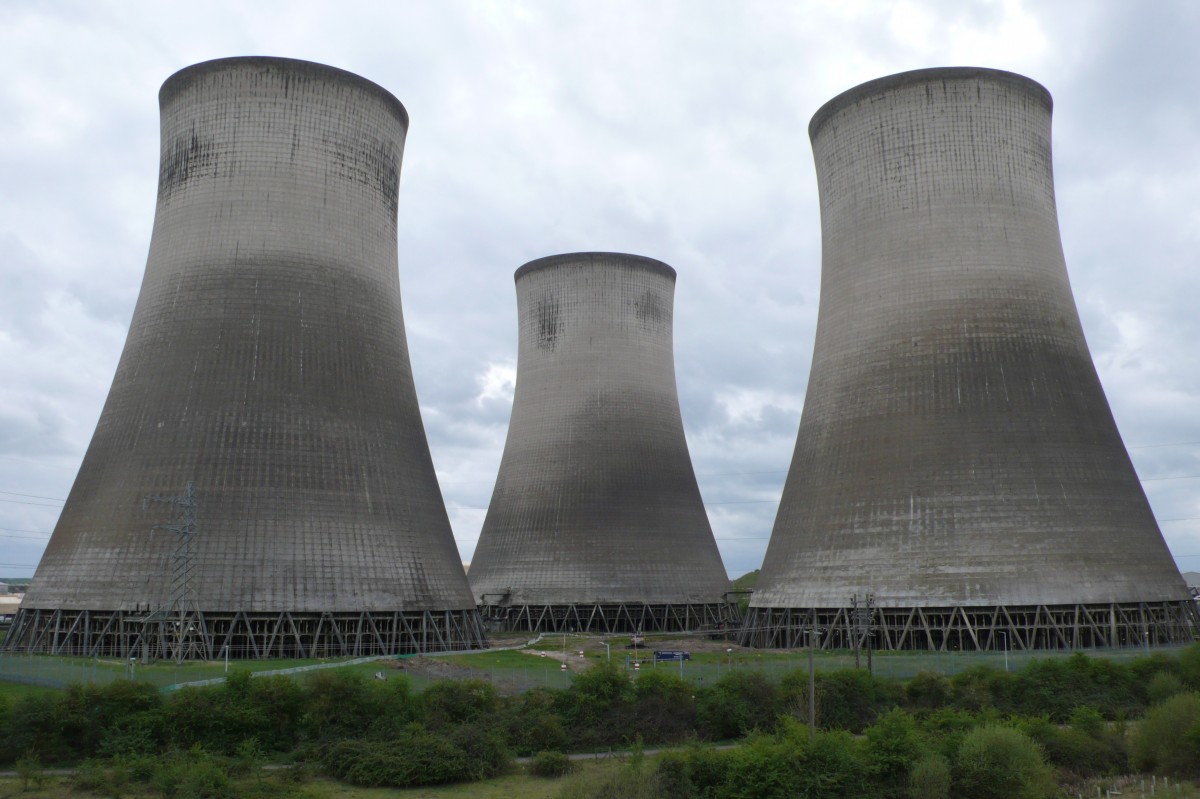
Great British Walks: Didcot Power Station
If you have every travelled via the South-West Trains service from Oxford to Reading, you will, most likely, recall seeing the three cooling towers of Didcot power station rising out of the landscape, roughly fifteen minutes into the journey. Clumped together among a shoal of smaller administrative buildings to the west of the town itself, these are the last remaining towers designed by Frederick Gibberd almost half a century ago. The other three were demolished in the early hours of a July Sunday last year, crumpling under a spectacular plume of smoky dust that was shown around the world on live stream. And by the end of this year the same fate will befall that forlorn three, whose grey presence against the Oxfordshire greenery has inspired parodic odes (“Didcot, thou bugger!”), been voted Britain’s third ‘worst eyesore’ by the neoterics at Country Life, and incurred the wroth of one luxury biscuit endorsing member of the royal family.
“But say what you like about them, they put us on the map,” says septuagenarian Phil, beneath the rattle of the tannoy at Didcot train station. “Everyone knows who we are because of them towers – but no one’s heard of Grove, and that’s just down the road!”
The front entrance is none too welcoming with its wholly un-idle threats of guard dogs and electrified fencing. Fortunately, an alternative route exists, in order to get a proper look at the towers. After about a mile of tree-lined, nondescript road, which skirts the outer edge of the power station, the terrain shifts into what looks like the beginnings of an earthy hillock. The road fades away into an apparently disused dirt track, and it soon transpires that this hillock is no hillock – or at least natural hillock – at all but, rather, a mound of human waste, swarmed by a cloud of birds, circling and swooping above the pile. But though the smell may not be music to the nostrils, this faecally knoll provides the best vantage point for Gibberd’s three towers. From here every detail can be espied, from the patchwork of concrete blocks, to the latticed stilts that hold them up. They stand gracefully amongst the silence of the afternoon scenery, broken only by the drone of the engine of a stunt-bike, being driven around a make-shift dirt track at the edge of the mound. The very enormity of these mat, grey structures at such close proximity is mutedly astounding, and it soon becomes clear as to why words like ‘awesome’ and ‘striking’ are so liberally banded around with reference to them.
But it’s Saturday, early evening, and Phil is getting bored of the cross-examination. “I will leave you with this though. They may be ugly buggers, but I’ll be bloody sad to see ‘em go.”
Photograph by George Grylls







